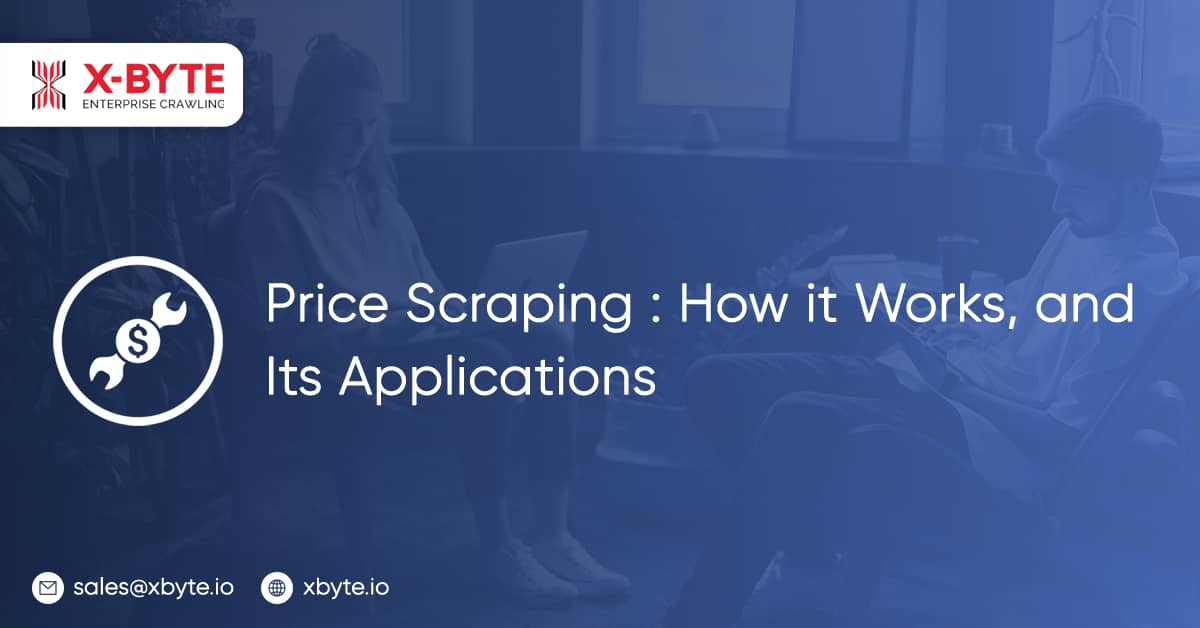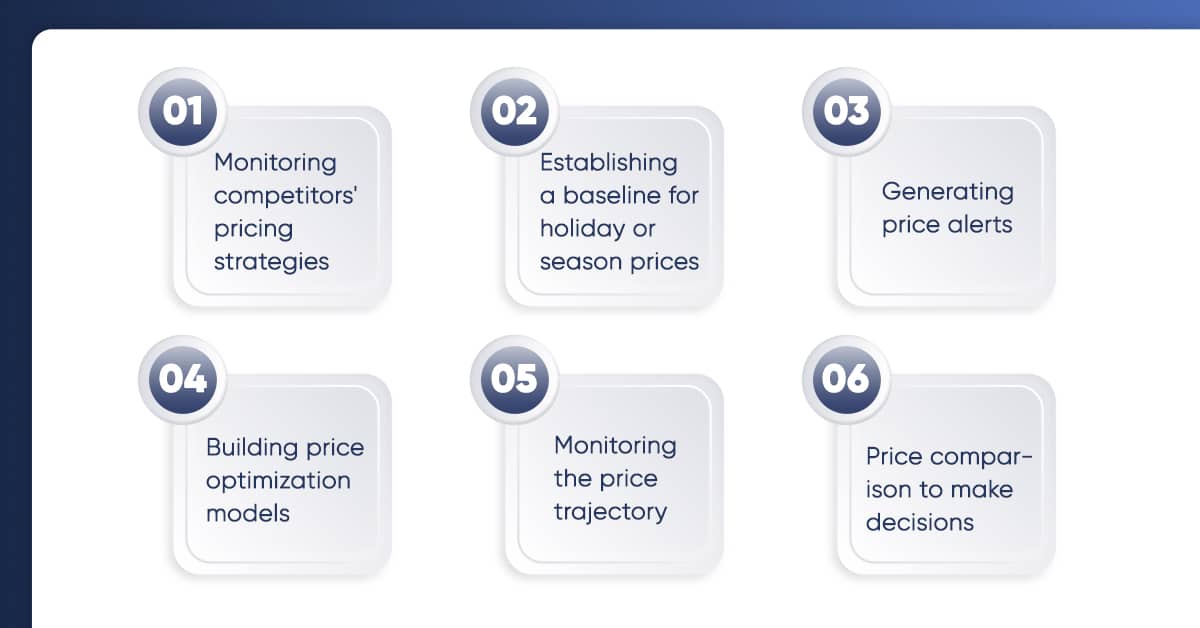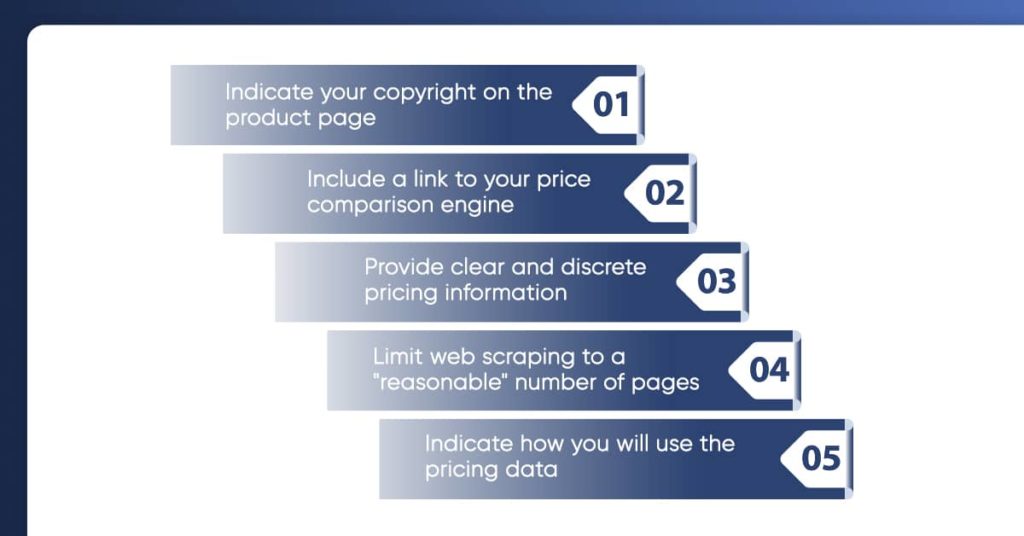
Price Scraping is a method of fetching pricing information from web pages and using that to price products or services. It relies on labeled datasets. The algorithm uses the web page’s HTML code to recognize patterns correlating with pricing data.
This technique has a range of potential applications for businesses. It can help set prices and monitor competitors’ pricing strategies. The algorithm generates a set of predictions, the outputs of which are then used to generate a price. Price scraping has become a popular topic in online education, marketing, and sales.
This blog will cover the basic ideas behind price scraping and provide a walkthrough of how to implement the technique in Python and its applications, as well as the advantages of price scraping.
What is Price Scraping?
Price scraping refers to obtaining pricing information by analyzing the HTML source of web pages. The extracted information can be used to inform pricing strategies or to set prices. The method relies on machine learning and data mining techniques.
How Does it Work?
In the context of price scraping, the goal is to use HTML tags and text to predict the price of a given product. The process can be split into three steps: parsing, data mining, and prediction.
To start a price scraping project, we must first obtain a web page containing pricing information. There are many ways to do this, but we will use an online retailer’s product page for this tutorial. If you want to follow along with your code, this page has all the needed HTML code.
The next step is parsing the HTML source of that web page into Python objects. It can be used in machine learning operations and data mining algorithms. In this case, we will use a Python library called BeautifulSoup.
Import Requests
from bs4 import BeautifulSoup
# Step 1: Obtain the web page containing pricing information
url = "https://www.example-retailer.com/product-page"
response = requests.get(url)
html_content = response.content
# Step 2: Parse the HTML using BeautifulSoup
soup = BeautifulSoup(html_content, "html.parser")
# Step 3: Extract pricing information
price_element = soup.find("span", class_="product-price")
if price_element:
product_price = price_element.text
print("Extracted Price:", product_price)
else:
print("Price information not found on the page.")
# Note: The class name “product-price” is just an example. You should inspect the HTML of the retailer’s product page to identify the correct HTML tags and class names containing the pricing information.
import pandas as pd
from sklearn.model_selection import train_test_split
from sklearn.linear_model import LinearRegression
# Sample dataset for demonstration purposes
# Replace this with your actual dataset or source of labeled data
data = [
{"feature1": 1, "feature2": 3, "feature3": 5, "price": 100},
{"feature1": 2, "feature2": 4, "feature3": 6, "price": 150},
# ... more data ...
]
df = pd.DataFrame(data)
# Split the dataset into features and the target variable
X = df[["feature1", "feature2", "feature3"]]
y = df["price"]
# Split the data into training and testing sets
X_train, X_test, y_train, y_test = train_test_split(X, y, test_size=0.2, random_state=42)
# Create and train a machine-learning model
model = LinearRegression()
model.fit(X_train, y_train)
# Step 4: Make predictions using the trained model
predicted_prices = model.predict(X_test)
# Step 5: Compare predicted prices with actual prices
for idx, predicted_price in enumerate(predicted_prices):
actual_price = y_test.iloc[idx]
print(f"Predicted Price: {predicted_price:.2f} | Actual Price: {actual_price:.2f}")
# Step 6: Implement a pricing strategy based on predictions. This step involves integrating price predictions into your business logic.
How Can Price Scraping Help Your Business?
Price scraping is a powerful and straightforward tool for price monitoring and setting pricing policies that the supply chain may not support. It is an excellent way to monitor your competitors’ pricing strategies.

Applications of Price Monitoring:
Monitoring Competitors’ Pricing Strategies:
It is used to gather information about competitors’ pricing strategies. One can predict whether the competitor will increase or decrease their pricing based on the competitor’s sources.
Establishing a Baseline for Holiday or Season Prices:
Customer behavior, customer demographics, and the business model are all variables that need to be considered when setting prices. Price scraping can obtain baseline pricing information for specific times of the year or particular customers.
Generating Price Alerts:
With just a few lines of code, price scrapers can generate alerts based on changes in market prices (e.g., within a specific time interval).
Building Price Optimization Models:
Amazon and Walmart’s price optimization models are based on machine learning algorithms that extract pricing information from HTML sources to inform their price process.
Monitoring the Price Trajectory:
Inventory management is another essential aspect of running a business. It can be assisted by analyzing pricing information over time.
Price Comparison to Make Decisions:
Price scraping can be used to build an online price comparison engine. Customers use price comparison engines to make purchase decisions based on the prices of products in different locations. Not all online retailers support a price API or web service, making it difficult for user-friendly price comparison engines to obtain price information. Price scraping provides a way around this issue by extracting the pricing information from the HTML source of the product page.
How Can Price Scraping Protect Your Business?
There are several legal risks associated with price scraping. One of the most common complaints from retailers is that price scrapers are collecting pricing information without their permission or providing no way for them to opt-out.

Though price scraping may be an efficient way to monitor competitors’ pricing strategies and, it may pose a legal risk in some cases. Here are some ways to protect yourself from potential risks:
Indicate Your Copyright On The Product Page:
Merchants can use a statement letting visitors know that the information on the page is copyrighted property belonging to the merchant.
Include A Link To Your Price Comparison Engine:
Many price comparison engines are built based on available machine learning algorithms. You can include a link to your price comparison engine in the footer of your product page, allowing customers to compare prices with other retailers’ websites.
Provide Clear And Discrete Pricing Information:
Communicate what you provide and how you use visitors’ prices via the web form. If you disclose the specific purpose of gathering pricing data, or if some consumers need help understanding your tracking method, this may be considered an illegal practice under US law.
Limit Web Scraping To A “Reasonable” Number Of Pages:
A reasonable limit should be determined based on the size and usage of your business.
Indicate How You Will Use The Pricing Data:
One way to protect against misuse is by providing an opt-out option that allows customers to prohibit their information from being collected in the first place. Amazon’s price adjustment tool is a good example.
X-Byte is Always Ready to Help You
Price scraping is just one of the tools you can use to monitor and optimize your pricing strategies. Research suggests that businesses need to monitor their pricing strategies.
There are many other uses for price scraping, such as setting baseline prices and detecting seasonal trends. You have heard of Amazon’s machine learning-based pricing technique. It uses data gathered from outside sources to determine to price. This type of technology has changed the market dynamics by changing how e-commerce websites set their prices.
If you think that you require any help in data extraction, contact X-Byte Enterprise Crawling and learn more about our pricing intelligence solutions as well as how we can assist you in building your products based on the web data.
